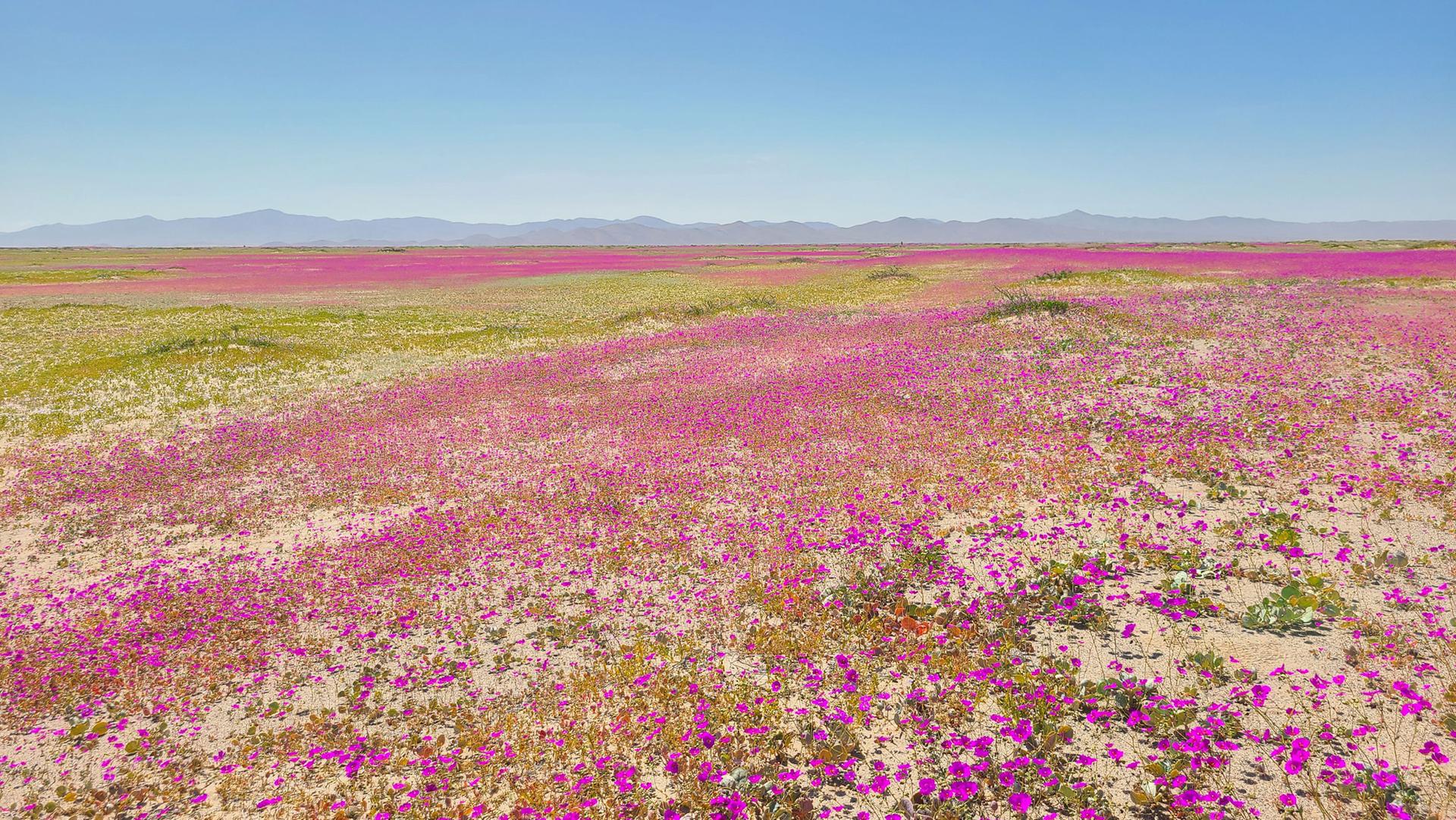In Chile’s Atacama Desert, it almost never rains. The area is so dry that it even serves as a practice site for expeditions to Mars. But once or twice every decade, the skies open up and it rains, causing dormant seeds underground to grow.
As a result, a spectacular “flowering desert” of plants that are mostly endemic to the Atacama region attract tourists and botanists from around the world. But the great interest in the flowers is also the same thing that’s endangering them.
Pata de guanaco
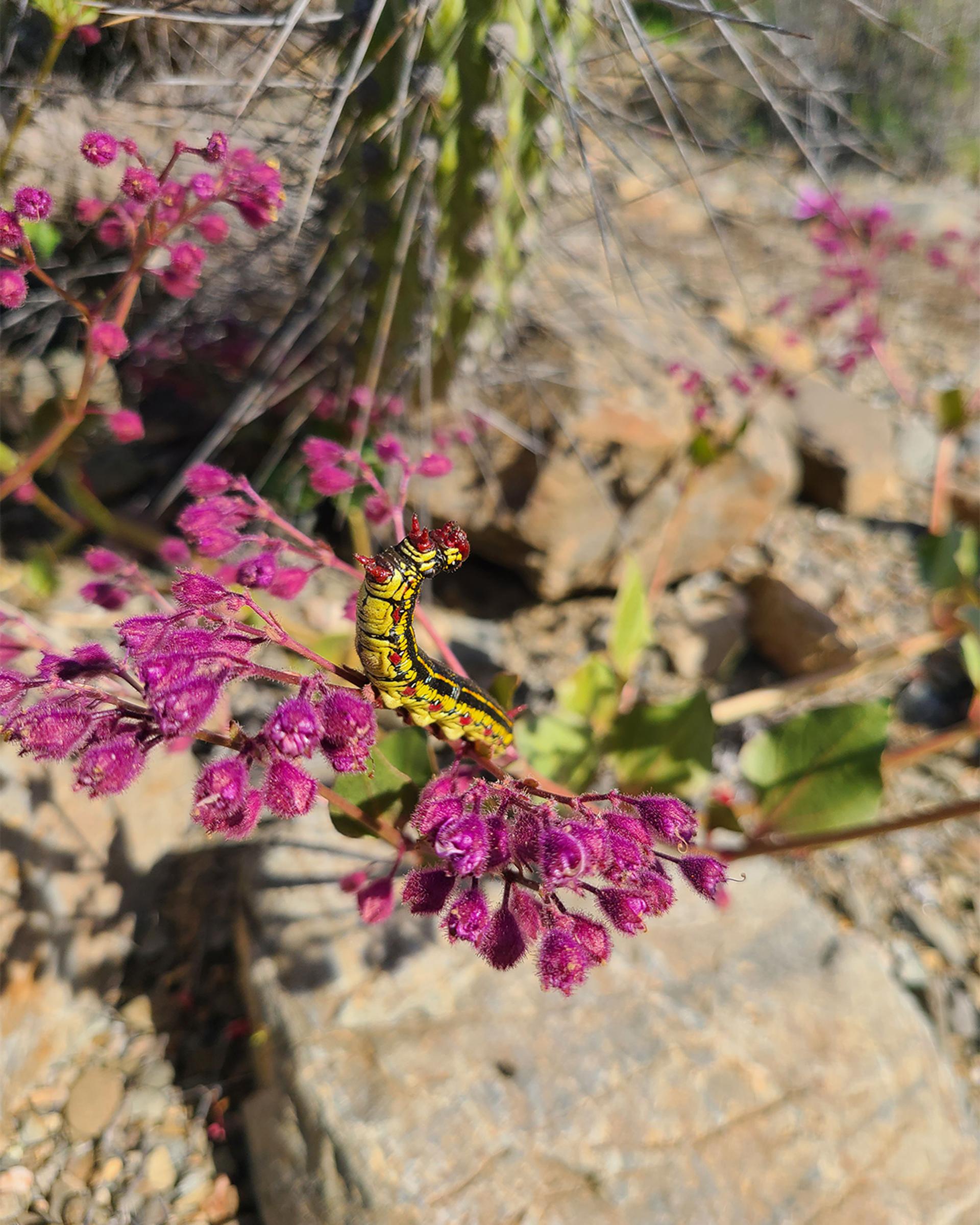
This natural phenomenon of the blooming desert usually happens every 5 to 7 years, and it’s difficult to predict.
“There needs to be a perfect combination of precipitation and temperature for the flowers to bloom,” said Monserrate Barrientos, a tour guide for the flowering desert in Copiapó.
The most emblematic of the plants is a little pink flower — known as pata de guanaco, or “guanaco’s foot” — that carpets large swaths of the desert during the bloom. Guanaco is a wild llama native to the area, whose feet look similar to the leaves of the flower.
“The leaves are thick, to [be able to] store water,” Barrientos said.
For many scientists, the flowering desert is an exciting event, because it proves the resilience of certain types of flora, like the pata de guanaco, in the world’s driest desert.
Benito Gomez Silva, a microbiologist at the University of Antofagasta, is studying microorganisms that are very resistant to extreme water scarcity.
“If a plant can resist long periods of drought, its genetic material has useful information for people who work on genetically modified plants,” he said.
But the flowering desert is facing several threats. One of them is climate change, according to Cesar Pizarro, a biologist with the Chilean Department of Conservation.
“Longer droughts or heavier rains could affect the frequency of the desert bloom,” he said. “And, eventually, it could even stop happening.”
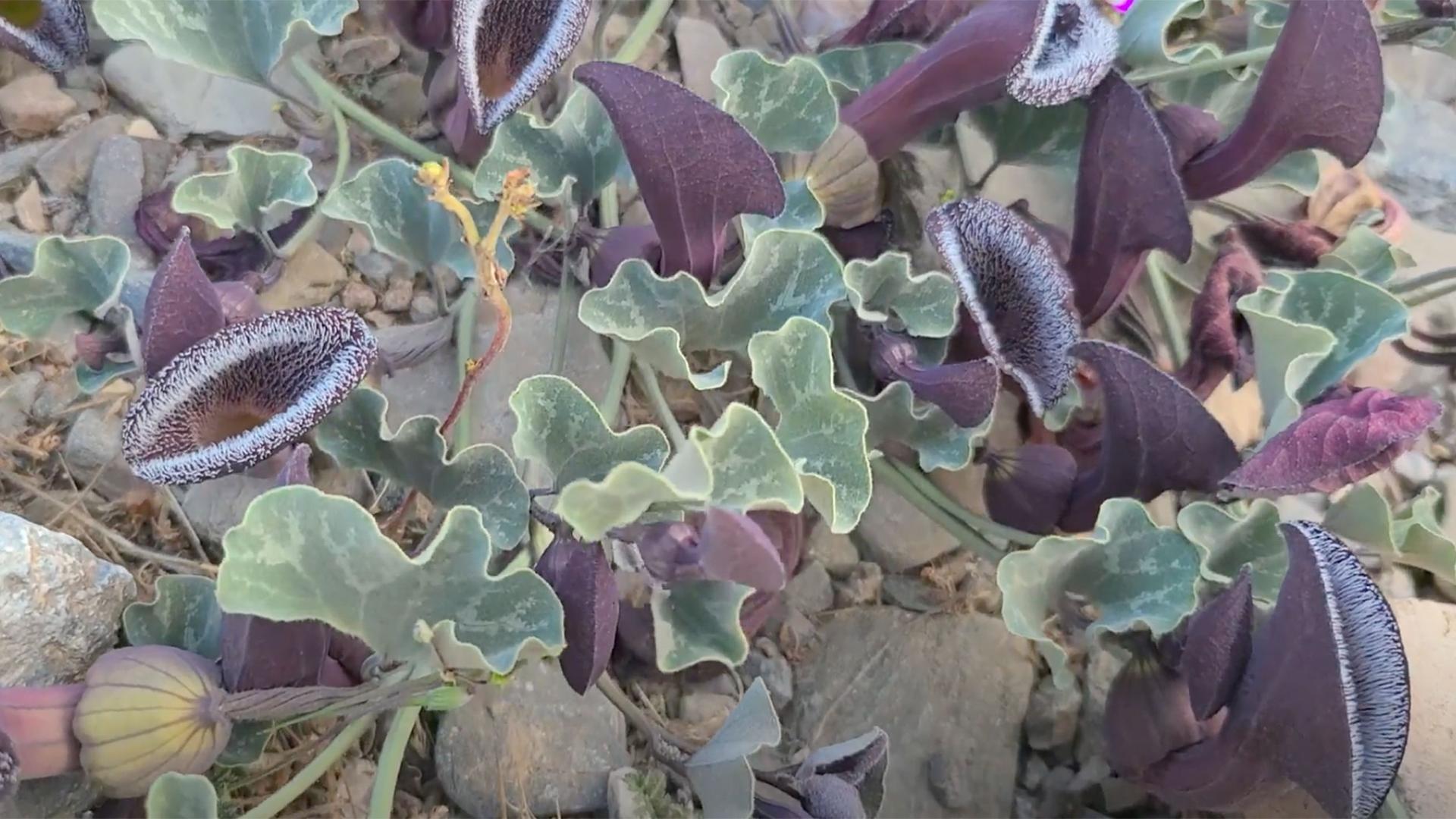
Another threat is traffickers who collect the native plants, as well as visitors who pluck flowers to bring home with them.
During his first visit to the Atacama region earlier this month, Chile’s President Gabriel Boric announced the creation of the Desierto Florido National Park for the first quarter of 2023 in an attempt to preserve the area.
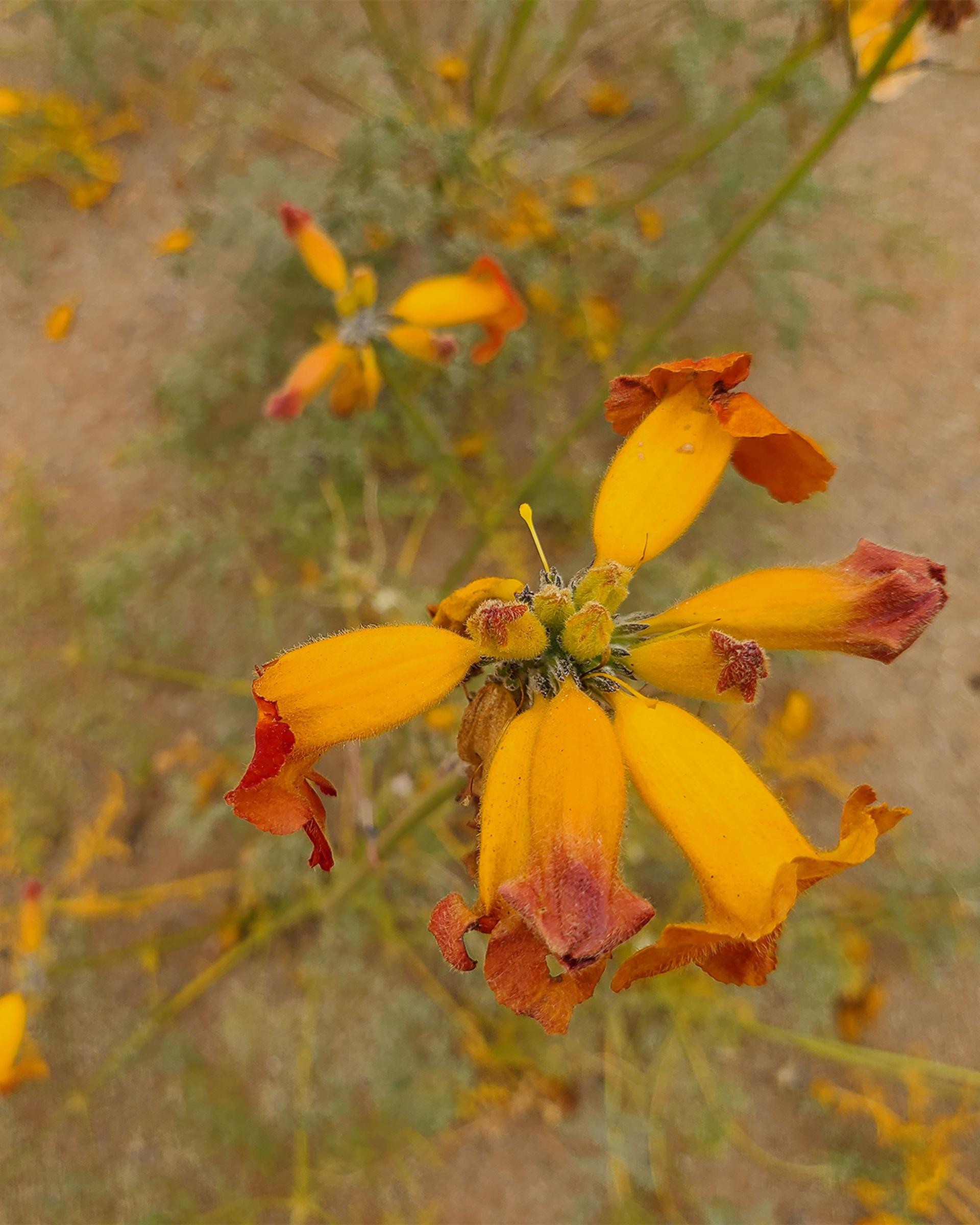
Environmental organizations have raised concerns in recent years about the possible negative effects of large numbers of tourists visiting the flowering desert, as well as the illegal trade of native flower species and the development of motorsport in the region.
Boric said that unscrupulous people are damaging this desert.
“We need to protect the region and educate people about it,” he declared while standing in front of a field of pink flowers.
An increased level of protection will ensure that tourists behave responsibly.
Chilean tourists Carlos Silva and Ana Maria Acuña drove 23 hours from across the country just to see the flowering desert.
“This is a birthday gift for my wife, Ana,” Silva said.
And Ana said that she’s been inspired by the visit.
“Humans have a lot to learn from nature. It’s so resilient to scarcity, to difficulties.”
Professor Benito Gomez-Silva agreed that there is a lot to learn.
“It’s like translating the information that our little brothers, the microorganisms in the desert, provide for us,” he said.
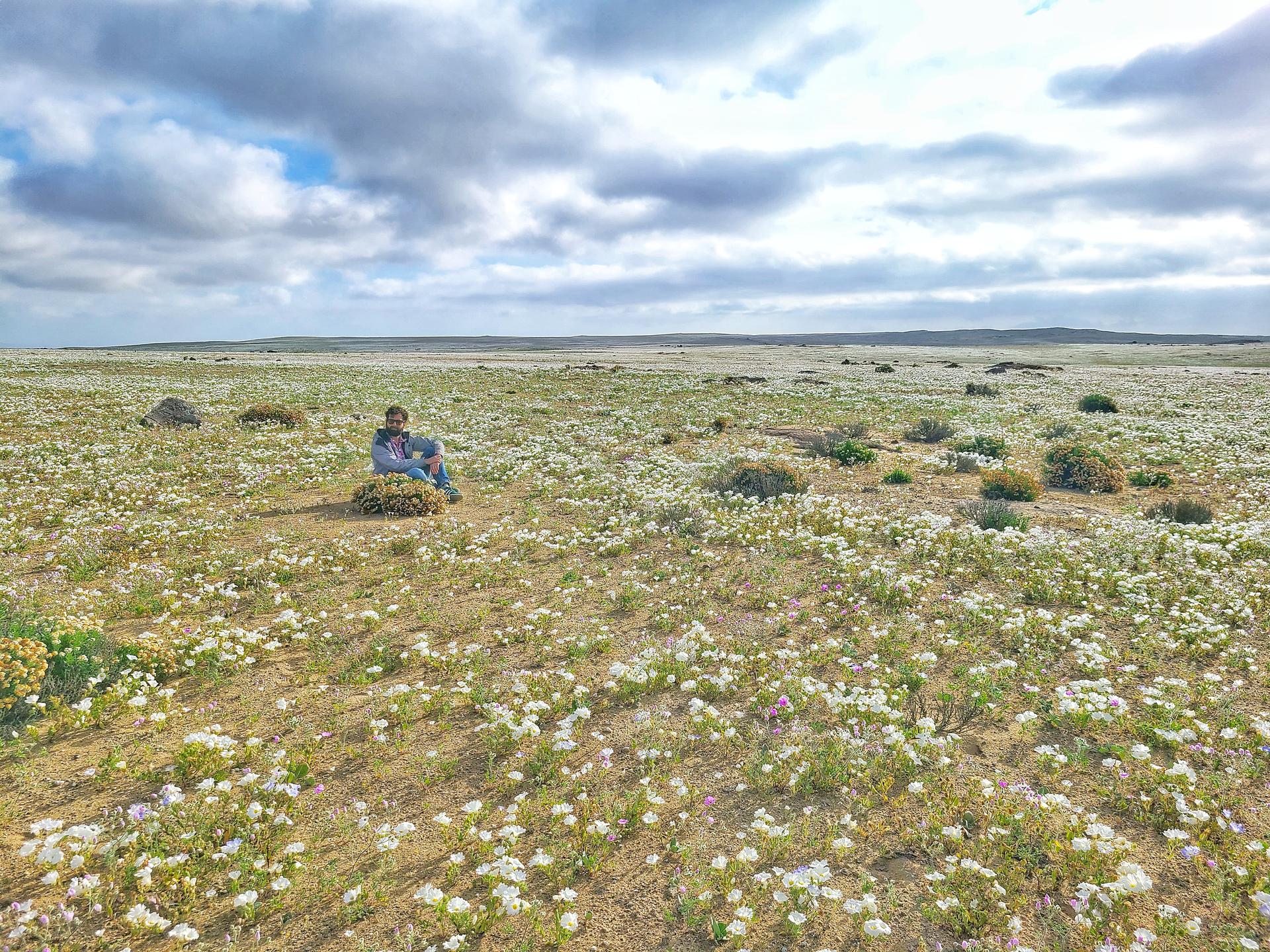
Especially with our changing climate, Gomez-Silva said that these desert plant species could have a lot to teach us, humans.
Related: Fire and climate change are altering Patagonia’s ecosystems
